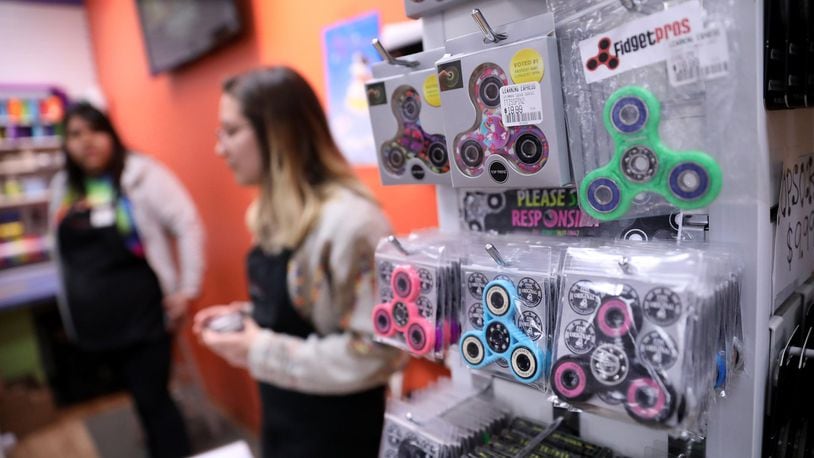Nationally, the three-pronged spinners on a ball bearing are rued by educators as a distracting device, prompting school districts from Indiana to Florida to ban them.
MORE: Teachers are squirming over fidget spinners
But local educators concede the toys may have some educational benefit for their intended audience.
Leah Wasburn-Moses, a professor of educational psychology at Miami University, recently bought one online to show her students, who are future special education teachers.
She said fidgets have been used for a long time for students with special needs to meet certain sensory needs, but they’re now being used by the general population.
“It’s been very popular for many years for students with ADHD and other attention issues, but now we’re thinking about the general population and focusing on work and dealing effectively with anxiety and autism and a number of conditions,” she said.
“Like most things, there are positives and negatives,” she said. “The positives are I’m looking at individual supports to help students or people in general become successful with school or work. I think the negatives are they can also distract from the goals of schools or work.”
“They are not effective for everybody,” she said. “Teachers, parents and professionals have to figure out, do they work for children to help them focus? Which ones? It’s very individualized.”
LOCAL EDUCATION TREND: Outdoors can be the best classroom
Springboro Community City Schools teachers have had some problems with kids becoming distracted in class, but the district does not intend to ban the spinners, said Neej Mescher, district communications coordinator.
“As a district, we’re not going to be banning them,” she said. “We understand they’re useful for some students.”
The devices cost between $1 to several hundred dollars depending on quality and materials and are available for purchase on Amazon.com.
Staff writer Michael D. Clark contributed to this report.
About the Author
